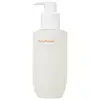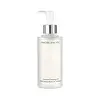What's inside
What's inside
 Key Ingredients
Key Ingredients

 Benefits
Benefits

 Concerns
Concerns

 Ingredients Side-by-side
Ingredients Side-by-side

C12-15 Alkyl Benzoate
AntimicrobialPentaerythrityl Tetraethylhexanoate
EmollientIsopropyl Palmitate
EmollientPentaerythrityl Tetraisostearate
EmollientCaprylic/Capric Triglyceride
MaskingPEG-20 Glyceryl Triisostearate
EmollientPEG-8 Isostearate
EmulsifyingCocos Nucifera Oil
MaskingDextrin Palmitate
EmulsifyingParfum
MaskingLimonene
PerfumingGlyceryl Behenate/Eicosadioate
EmollientCoco-Caprylate/Caprate
EmollientSqualane
EmollientLinalool
PerfumingWater
Skin ConditioningButylene Glycol
HumectantPrunus Armeniaca Kernel Oil
MaskingPinus Koraiensis Seed Oil
PerfumingSesamum Indicum Seed Oil
EmollientCamellia Japonica Seed Oil
EmollientCoix Lacryma-Jobi Ma-Yuen Seed Extract
Skin ConditioningCitrus Unshiu Peel Extract
MaskingCastanea Crenata Shell Extract
Skin ConditioningSpirodela Polyrhiza Extract
Skin ConditioningPrunus Mume Seed Extract
Skin ConditioningNelumbo Nucifera Seed Extract
AntimicrobialC12-15 Alkyl Benzoate, Pentaerythrityl Tetraethylhexanoate, Isopropyl Palmitate, Pentaerythrityl Tetraisostearate, Caprylic/Capric Triglyceride, PEG-20 Glyceryl Triisostearate, PEG-8 Isostearate, Cocos Nucifera Oil, Dextrin Palmitate, Parfum, Limonene, Glyceryl Behenate/Eicosadioate, Coco-Caprylate/Caprate, Squalane, Linalool, Water, Butylene Glycol, Prunus Armeniaca Kernel Oil, Pinus Koraiensis Seed Oil, Sesamum Indicum Seed Oil, Camellia Japonica Seed Oil, Coix Lacryma-Jobi Ma-Yuen Seed Extract, Citrus Unshiu Peel Extract, Castanea Crenata Shell Extract, Spirodela Polyrhiza Extract, Prunus Mume Seed Extract, Nelumbo Nucifera Seed Extract
Cetyl Ethylhexanoate
EmollientDicaprylyl Carbonate
EmollientPolyglyceryl-10 Dioleate
EmulsifyingPentaerythrityl Tetraethylhexanoate
EmollientPEG-8 Glyceryl Isostearate
EmollientParfum
MaskingCamellia Sinensis Seed Oil
HumectantLimonene
PerfumingButylphenyl Methylpropional
PerfumingCitronellol
PerfumingWater
Skin ConditioningTocopherol
AntioxidantLinalool
PerfumingCocos Nucifera Oil
MaskingBetula Platyphylla Japonica Juice
Skin ConditioningButylene Glycol
HumectantVaccinium Myrtillus Fruit Extract
Skin ConditioningGlycine Soja Oil
EmollientZingiber Officinale Root Extract
MaskingSaccharum Officinarum Extract
MoisturisingCitrus Aurantium Dulcis Fruit Extract
MaskingCitrus Limon Fruit Extract
MaskingAcer Saccharum Extract
Skin ConditioningCamellia Sinensis Leaf Extract
AntimicrobialPhenoxyethanol
PreservativeCaprylyl Glycol
Emollient1,2-Hexanediol
Skin ConditioningDisodium EDTA
Ethylhexylglycerin
Skin ConditioningCetyl Ethylhexanoate, Dicaprylyl Carbonate, Polyglyceryl-10 Dioleate, Pentaerythrityl Tetraethylhexanoate, PEG-8 Glyceryl Isostearate, Parfum, Camellia Sinensis Seed Oil, Limonene, Butylphenyl Methylpropional, Citronellol, Water, Tocopherol, Linalool, Cocos Nucifera Oil, Betula Platyphylla Japonica Juice, Butylene Glycol, Vaccinium Myrtillus Fruit Extract, Glycine Soja Oil, Zingiber Officinale Root Extract, Saccharum Officinarum Extract, Citrus Aurantium Dulcis Fruit Extract, Citrus Limon Fruit Extract, Acer Saccharum Extract, Camellia Sinensis Leaf Extract, Phenoxyethanol, Caprylyl Glycol, 1,2-Hexanediol, Disodium EDTA, Ethylhexylglycerin
 Reviews
Reviews

Ingredients Explained
These ingredients are found in both products.
Ingredients higher up in an ingredient list are typically present in a larger amount.
Butylene Glycol (or BG) is used within cosmetic products for a few different reasons:
Overall, Butylene Glycol is a safe and well-rounded ingredient that works well with other ingredients.
Though this ingredient works well with most skin types, some people with sensitive skin may experience a reaction such as allergic rashes, closed comedones, or itchiness.
Learn more about Butylene GlycolCocos Nucifera Oil is obtained from the kernels of the coconut fruit. In other words, this is coconut oil.
Coconut Oil is rich in fatty acids with lauric acid making up the majority of these. It also contains linoleic acid. Due to this high fatty acid content, coconut oil helps trap moisture and soften skin.
Despite being antibacterial, coconut oil may not be great for acne-prone skin. It is comedogenic and may clog pores. This ingredient may not be safe for malassezia or fungal acne.
Note: Coconut Oil should not replace your sunscreen for UV protection. Studies show it only blocks about 20% of UV.
This oil is non-volatile and has a light scent.
The term 'fragrance' is not regulated in many countries. In many cases, it is up to the brand to define this term. For instance, many brands choose to label themselves as "fragrance-free" because they are not using synthetic fragrances. However, their products may still contain ingredients such as essential oils that are considered a fragrance.
Learn more about Cocos Nucifera OilLimonene is a fragrance that adds scent and taste to a formulation.
It's found in the peel oil of citrus fruits and other plants such as lavender and eucalyptus. The scent of limonene is generally described as "sweet citrus".
Limonene acts as an antioxidant, meaning it helps neutralize free radicals.
When exposed to air, oxidized limonene may sensitize the skin. Because of this, limonene is often avoided by people with sensitive skin.
The term 'fragrance' is not regulated in many countries. In many cases, it is up to the brand to define this term. For instance, many brands choose to label themselves as "fragrance-free" because they are not using synthetic fragrances. However, their products may still contain ingredients such as essential oils that are considered a fragrance.
Learn more about LimoneneLinalool is a fragrance and helps add scent to products. It's derived from common plants such as cinnamon, mint, citrus, and lavender.
Like Limonene, this ingredient oxidizes when exposed to air. Oxidized linalool can cause allergies and skin sensitivity.
This ingredient has a scent that is floral, spicy tropical, and citrus-like.
Learn more about LinaloolParfum is a catch-all term for an ingredient or more that is used to give a scent to products.
Also called "fragrance", this ingredient can be a blend of hundreds of chemicals or plant oils. This means every product with "fragrance" or "parfum" in the ingredients list is a different mixture.
For instance, Habanolide is a proprietary trade name for a specific aroma chemical. When used as a fragrance ingredient in cosmetics, most aroma chemicals fall under the broad labeling category of “FRAGRANCE” or “PARFUM” according to EU and US regulations.
The term 'parfum' or 'fragrance' is not regulated in many countries. In many cases, it is up to the brand to define this term.
For instance, many brands choose to label themselves as "fragrance-free" because they are not using synthetic fragrances. However, their products may still contain ingredients such as essential oils that are considered a fragrance by INCI standards.
One example is Calendula flower extract. Calendula is an essential oil that still imparts a scent or 'fragrance'.
Depending on the blend, the ingredients in the mixture can cause allergies and sensitivities on the skin. Some ingredients that are known EU allergens include linalool and citronellol.
Parfum can also be used to mask or cover an unpleasant scent.
The bottom line is: not all fragrances/parfum/ingredients are created equally. If you are worried about fragrances, we recommend taking a closer look at an ingredient. And of course, we always recommend speaking with a professional.
Learn more about ParfumPentaerythrityl Tetraethylhexanoate is an emollient that helps make your skin smooth and hydrated. It specializes in creating a non-oily and "wet" feeling on skin.
This ingredient comes from isostearic acid, a saturated fatty acid. It is a synthetic ingredient.
Water. It's the most common cosmetic ingredient of all. You'll usually see it at the top of ingredient lists, meaning that it makes up the largest part of the product.
So why is it so popular? Water most often acts as a solvent - this means that it helps dissolve other ingredients into the formulation.
You'll also recognize water as that liquid we all need to stay alive. If you see this, drink a glass of water. Stay hydrated!
Learn more about Water